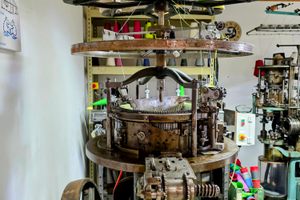About
After the suppression of the Jacobite rebellions in the 1700s, the Scottish Highlands and Hebridean islands suffered from years of neglect and population decline, resulting in the disappearance of many small parish churches. In 1823, Parliament set up a commission to restore them and hired civil engineer Thomas Telford, who was known for his roadworks and bridges throughout Scotland, to design 43 churches.
Telford’s design called for a T-shaped church with a hexagonal pulpit placed between two windows and an unadorned exterior, and each of the 32 so-called Parliamentary Churches that were built followed his template with little variation. The Portnahaven Church, however, was one of six to raise additional funds to include a gallery.
Since its construction in 1828 by William Thompson, the Portnahaven church has retained most of the original design, and remains one of the more complete and unaltered examples of Telford’s churches, with one notable exception. The church has an additional and seemingly unnecessary second entrance on the south wall. The reason for this is said to be bad blood with the neighbors.
Port Wemyss (pronounced “weems”) is a small fishing village to the south of Portnahaven. Without a church of their own, residents of Port Wemyss would have walked a few hundred yards to the Portnahaven church, which served both of their communities. But the relationship was not always a friendly one, and the villages had a long-standing rivalry. It’s believed that congregants from the two villages didn’t want to sit together, especially at weddings. According to local legend, the church’s two doors were built so that each village had its own entrance. Due to the interior layout of the church, the congregants could have been kept separate inside the church as well.
Related Tags
Know Before You Go
The church is open every day, services are held on Sundays at 10am.
Published
August 18, 2023






















